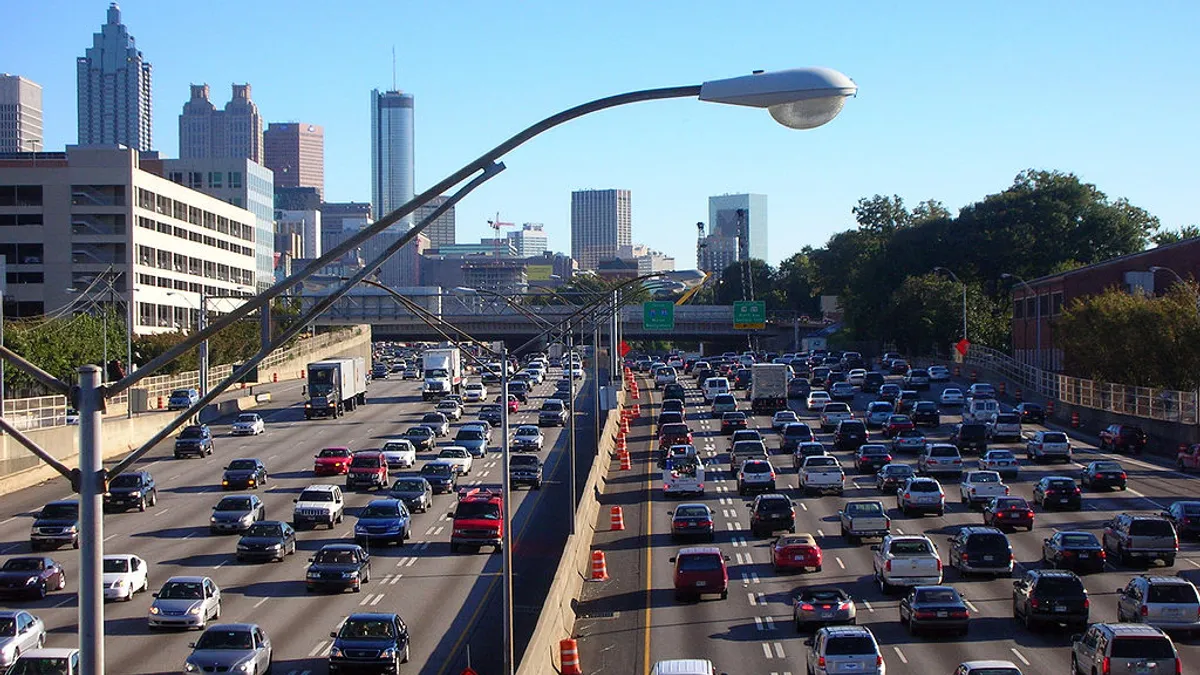The one-year extension of the Fixing America’s Surface Transportation (FAST) Act for highway funding should come as a relief to road builders, but also leaves unclear how much money will actually be available for all of 2021, according to an industry association official.
The extension of the FAST Act that Congress passed Sept. 30 contained a $13.6 billion infusion to prop up highway and transit funding. But a 72-day continuing resolution to avert a government shutdown that was paired with the year-long FAST Act extension only runs through Dec. 11, at which point Congress will need to act again to keep dollars flowing.
That means, in the interim, only about 19% of the approved highway funds can actually be released to state Departments of Transportation.
The following interactive table illustrates how much each state’s 2021 highway budget funds will be, and how much is actually approved to be spent through Dec. 11. Percentages vary based on the amount of funding states contributed to the federal Highway Trust Fund in the past, and the guaranteed 95% rate of return on those funds by statute.
A FAST Trickle: Budgeted vs. Banked Highway Dollars
Z
A
The result is that while states can now have a number to budget to for their proposed highway projects in 2021, they can only spend dollars on jobs — and start paying contractors — that are below that 19% threshold, according to Jay Hansen, executive vice president, advocacy, at the National Asphalt Pavement Association (NAPA).
The bottom line is that state DOTs — and the road builders that contract with them — are still only guaranteed a sliver of that multi-billion dollar spending package, until the lame-duck Congress picks up the debate again after the Nov. 3 election to either pass a new, bigger highway spending bill, or another continuing resolution to greenlight dollars to be spent for a few more months.
"The job's not complete," said Hansen. "Getting the FAST Act extension is a big deal, no doubt. But real dollars have to come with it, and Congress only gave us 72 days' worth of dollars. We need 365 days of dollars."
While the situation is better than it was before the FAST Act extension was approved, it fails to give states and road builders the certainty they need to put longer-term projects in motion heading into 2021.
“While it's good news that each state knows their full-year allocation that they can budget to for 2021, they can only put out bids that go to the amount that was provided in the 72-day continuing resolution,” Hansen said. “They cannot spend more than they have.”
A post-election punt
Hansen also said the move by Congress, which effectively kicks the can down the road until after the election, also means there will be real work for a continued highway appropriations funding bill to get done during the lame duck session, which is far from guaranteed.
“And then, anything that’s not finished in the lame duck session has to be dealt with by the new Congress, which is seated January 3,” Hansen said. “That means we’ve got a big highway bill that they may have to do all this clean up on at the beginning of the year. So there’s just a lot going on for the construction markets.”
Other industry observers view the dink-and-dunk extension of actual dollars that can be spent as of less concern. The real win for road builders is that the FAST Act was extended for another year, they say, even if the dollars behind it weren’t.
But Hansen would like to see a clearer roadmap ahead.
“I think next year could be the real battle,” Hansen said. “Congress has a lot of decisions to make for us to get clarity on the highway market for next year.”















